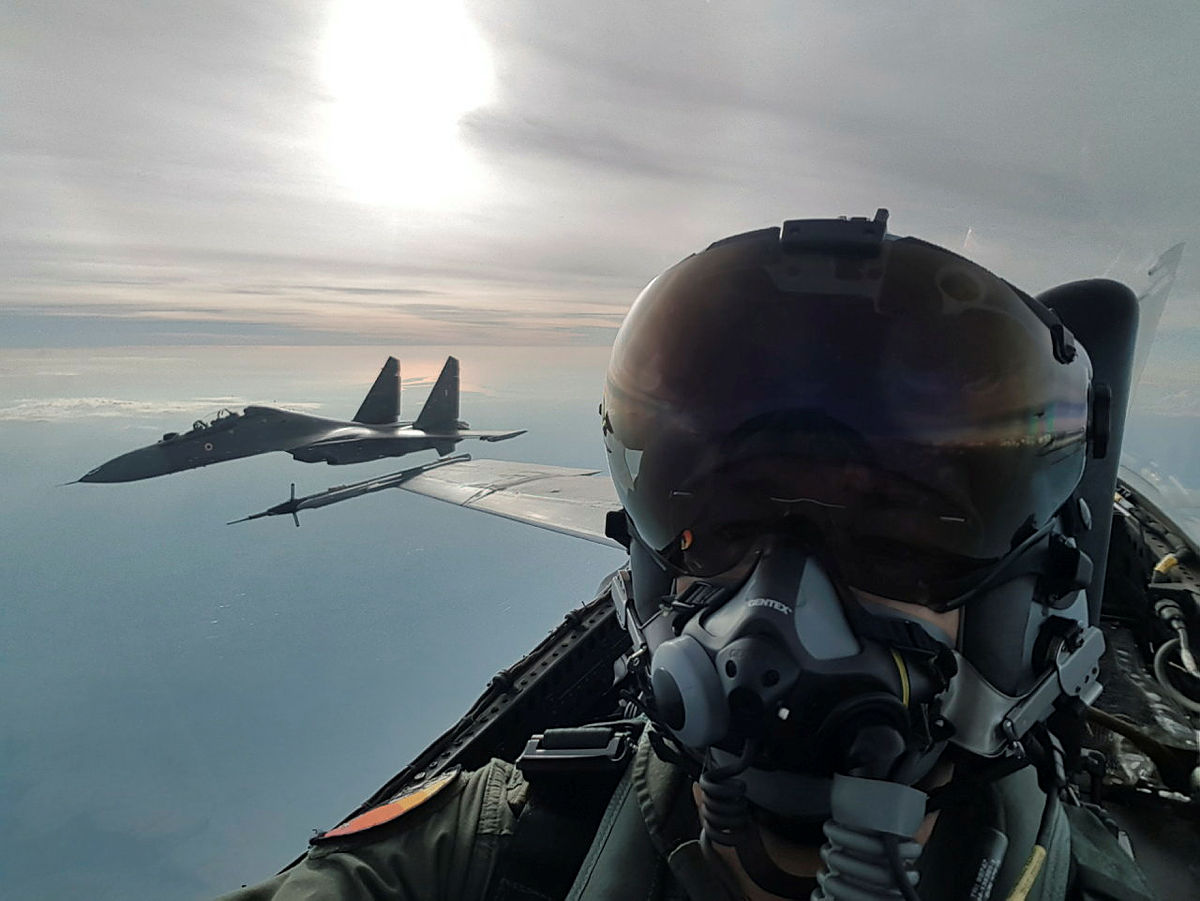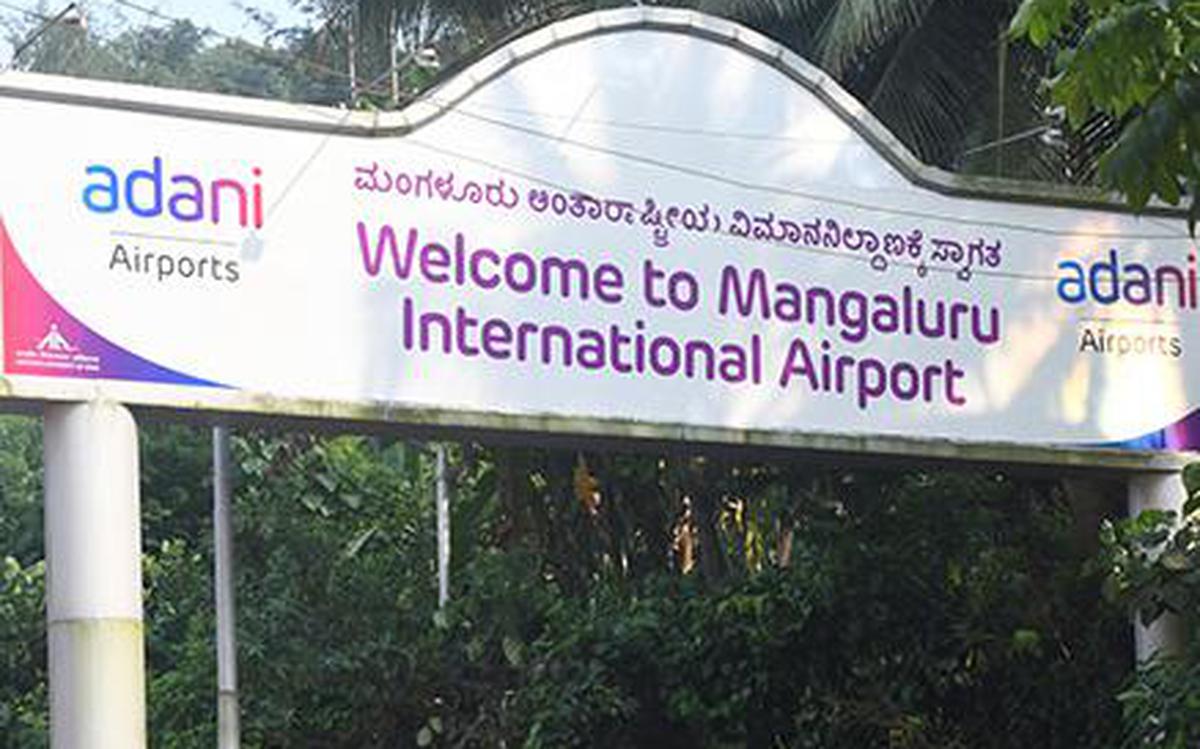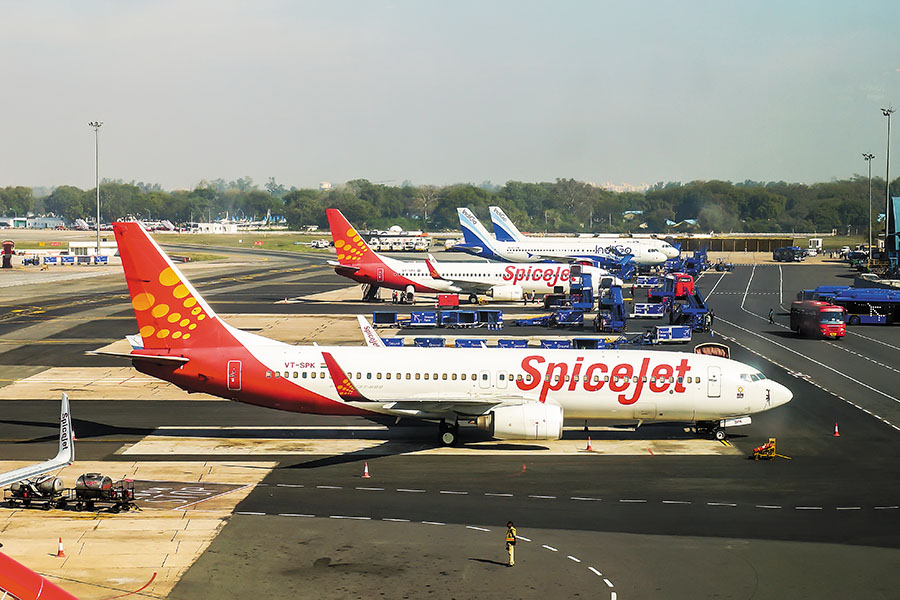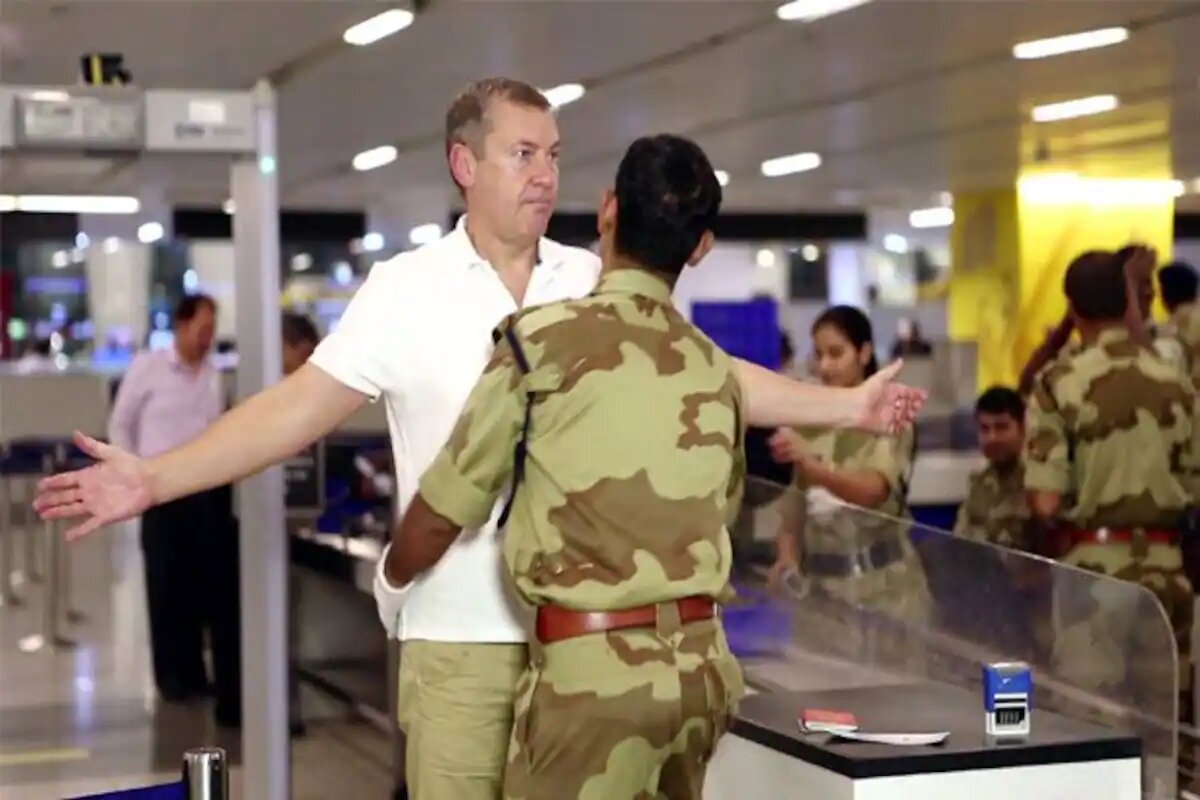In a major change in how airport safety is managed, the government has allowed airport operators (both private and government) to deploy non-public safety guards at airports.
This is the first time since 2002 that private security has been allowed in airports since the Central Industrial Security Force (CISF) became responsible for airport security after the Kandahar Hijack incident.
Against the required airport security strength of 30,003, CISF has 29,399.
This move comes after the centre felt that the strength of CISF was not enough to cater to the burgeoning growth in air traffic. Currently, out of 118 operational airports, 64 are manned by CISF’s Aviation Security Group.
The rest are with state police or India Reserve Battalions. Against the required airport security strength of 30,003, CISF has 29,399, leaving a shortfall, said a survey by the Centre.
The Bureau of Civil Aviation Security (BCAS), which is responsible for aviation security has passed an instruction to airports, which has allowed them to outsource the job of manning security in five non-core areas like segregating passengers at airport gates, queue management in front of boarding counters, baggage control, cargo area and security of visitor’s gallery.
The private security guards will work under CISF’s direct operational control and will also be trained by it.
With footfalls rising in major metro airports and several new airports joining India’s aviation network driven by the Centre’s regional connectivity scheme (read: UDAN) scheme, the deployment of private security guards will lessen the burden on CISF.
“Private security agency has been allowed in non-core or non-strategic areas of airports. Along with CISF, if private security guards are also deployed, this will increase the effectiveness and quality of airport security.”Jaideep Prasad, Joint DG, BCAS
The training of private security guards will be similar to that of CISF, which will also be beneficial for the industry in the long run which is seeing an exponential increase in traffic. Multiple private airports have already started deploying private security guards.
Adani-owned Ahmedabad and Guwahati airports have deployed around 100 private security personnel to man the non-core areas.
(With Inputs from The Economic Times)
Read next
Russia to deliver Igla-S man-portable air defence systems and MiG-29UPG fighter aircraft to India
Prashant-prabhakar
22 Aug 2022
The defence trade between India and Russia has crossed $15 billion since 2018, in the backdrop of some big deals including the $5.43 billion S-400 long-range air defence systems. India continues to remain Russia’s largest arms buyer with a major chunk of legacy hardware from Russia and the Soviet Union, although the volume of imports has reduced in the last decade.
According to the head of Russia’s Federal Service for Military-Technical Cooperation Dmitry Shugayev, Russia and India are collaborating in the deliveries of Igla-S man-portable air defence systems and MiG-29UPG fighter aircraft.
Dmitry Shugayev | Forecast International
The following projects of bilateral cooperation are at various stages of their approval: arranging the production of Ka-226T helicopters in India, delivering and setting up the licensed production of Igla-S man-portable air defence systems, delivering additional sets for the manufacture of Su-30MKI aircraft, delivering additional MiG-29UPG planes and delivering additional Ka-31 helicoptersthe defence cooperation chief said
What is the Igla-S Air Defence System?
The 9K38 Igla, NATO reporting name (SA-18 Grouse) is a Russian/Soviet man-portable infrared homing surface-to-air missile (SAM) system.
9K38 Igla | Armies Power, Aug 20, 2020 | Youtube
The Igla-1 entered service in 1981, the Igla in 1983, and the Igla-S in 2004. The Igla-S man-portable air defence missile system (MANPADS) is designed as a way for countering low-flying aircraft, as it forms the last line of defence against flying objects in a multi-layered air defence system.
The defence system features combat equipment, including the 9M342 missile and the 9P522 launching mechanism; maintenance equipment, including the 9V866-2 mobile test station and the 9F719-2 test set, training facilities and night firing devices. Additionally, they can also reportedly down combat helicopters as well as cruise missiles and unmanned aerial vehicles (UAVs).
The Army 2022 international military-technical forum organized by Russia’s Defence Ministry runs on August 15-21 on the premises of the Patriot Park near Moscow, at the Alabino practice range and the Kubinka airfield, and also in all of Russia’s Military Districts and the Northern Fleet, in more than 30 Russian regions.
SOURCE(s)
COVER: Air Power Asia
Read next
Operation "Pitch Black" - Indian Sukhoi and C17 Globemaster land in Australia
Prashant-prabhakar
20 Aug 2022

Aerial prowess has always been a major differentiator when it comes to establishing air supremacy. In what can be termed a show of strength in foreign skies, four Indian Sukhoi-30MKI fighter jets and two C-17 Globemaster-III strategic airlifter have touched down in Australia for the major 'Pitch Black' air combat exercise.
What is a "Pitch Black" air combat mission?
Exercise Pitch Black 2022 is the Royal Australian Air Force’s most significant International Engagement activity with allied nations and other partners participating, developing and enhancing military relationships at all levels.
This year, the RAAF Base Amberley, located near Ipswich will also be included and will witness the participation of around 100 aircraft and 2,500 military personnel from 17 nations- including France, Germany, Indonesia, India, Singapore, Japan, Republic of Korea, UK, the Philippines, Thailand, UAE, Canada, Netherlands, Malaysia, New Zealand and the US.
A JAS-39 Gripen from the Royal Thai Air Force prepares to taxi out of the shelters for another mission during Exercise Pitch Black 2018 at RAAF Base Darwin | defence.gov.au
It is also to be noted that Germany, Japan, and the Republic of Korea will be participating fully for the first time.
It is a biennial three-week multi-national large force employment exercise conducted primarily from RAAF Base Darwin and RAAF Base Tindal.
The mission features a range of realistic, simulated threats similar to a modern battle-space environment. It will include day and night flying involving up to approximately 100 participating aircraft. There will not be any overarching scenario for the exercise. Each mission will be executed as a stand-alone serial with distinct training objectives.
The exercise which has already commenced is slated to go on until 8 September 2022.
India's participation in the exercise
The IAF contingent, led by Group Captain YPS Negi, will undertake multi-domain air combat missions in a complex environment and will exchange best practices with the participating air forcesan officer said
https://twitter.com/IAF_MCC/status/1560634660429844485
The IAF last participated in the Pitch Black exercise two years back in 2018 and since then has bolstered military ties between the two countries.
Indian Air Force SU-30 Flanker aircraft conduct air-to-air refuelling from a Royal Australian Air Force No. 33 Squadron KC-30A Multi Role Tanker Transport during Exercise Pitch Black 2018 | defence.gov.au
Conversely, Australia has also become a regular participant in India's Malabar naval exercise with the US and Japan. This time around, the exercise has a special significance with China's recent activities concerning Taiwan and the "Quad" countries pledging their intent to deter any "coercion" in the Indo-Pacific region.
Source(s)
Cover: defence.gov.au
Read next
Mangaluru airport to increase user development fees for development activities
Radhika Bansal
22 Aug 2022

Adani Airports-owned Mangaluru airport has sought an immediate increase of INR 100 in user development fee (UDF) for domestic passengers, to undertake development activities. It has also requested permission to levy the fee on both arriving and departing passengers.
The airport in its latest tariff filing has sought to levy a UDF of INR 250 on domestic passengers starting this October, and gradually increasing it to INR 725 by March 31, 2026.
The Airports Economic Regulatory Authority of India (AERA), the tariff-fixing body, is in the process of fixing tariffs for Mangaluru airport for the period of April 1, 2021, to March 31, 2026. For worldwide passengers, it has sought to levy a UDF of INR 525 and enhance it to INR 1,200 by March 2026.
Mangaluru airport to increase user development fees for development activities
UDF could be charged on each departing and arriving passenger if the AERA agrees to it. At the moment, the UDF is INR 150 for home and INR 825 for worldwide passengers, however, is charged solely to departing passengers.
Multiple Airport Authority of India (AAI) owned and private airports have sought an increase in tariff in light of the expansion works they have undertaken. Airlines have opposed any significant hike in user or landing and parking charges as this will hurt their recovery after Covid.
“Any increase in airport charges for the remaining period will worsen the crisis for airlines. Airport operators should equally play a role in this situation by lowering their profit expectations and help provide the much-needed financial help to airlines,” said an executive of a private airline.
The Airports Economic Regulatory Authority of India (AERA), the tariff-fixing body, is in the process of fixing tariffs for Mangaluru airport for the period of April 1, 2021, to March 31, 2026.
The Adani Group took over the operations of the worldwide airport within the Karnataka port metropolis on October 31, 2020.
In its submission to the pricing regulator, the airport mentioned no tariff revision had taken place since 2010. “The modernisation plan of the airport can also be underway. The cumulative affect of those concerns could have a consequential affect on the tariff,” it mentioned.
The proposed developmental tasks, together with re-carpeting of the runway, and the development of a brand new terminal construction and cargo terminal, are estimated to value about INR 5,200 crore. The airport mentioned it will fund these via debt and fairness from guardian Adani Enterprise.
The airport has additionally sought will increase in touchdown and parking costs for airways. The AERA has sought remarks from airways, passenger associations and enterprise jet operators.
The airport has additionally sought will increase in touchdown and parking costs for airways.
Mangalore International Airport serves the port city of Mangalore, in the east Indian state of Karnataka. Mangalore is served by most major Indian carriers, which provide domestic services and international services to destinations in the Middle East.
Mangalore International Airport is the second busiest airport in Karnataka. In addition to domestic destinations, flights depart daily for major cities in the Middle East.
Airports Authority of India announced it formally transferred operation and management responsibility for Mangalore Bajpe Airport to Adani Airports in October 2020. Adani will operate Mangalore under a 50-year contract.
(With Inputs from The Economic Times)
Read next
Stocks of airlines of India moved mixed after the release of July air traffic data
Radhika Bansal
20 Aug 2022

Stocks of aviation companies — InterGlobe Aviation, Jet Airways, SpiceJet — moved mixed on Friday, August 19 after the Directorate General of Civil Aviation released the data for July on Thursday, August 18.
Shares of IndiGo's parent company, InterGlobe Aviation, fell 2.37% and touched an intraday low of INR 1,974.65. Jet Airways stock jumped 4.5%, and SpiceJet fell 1.4%.
According to the data released, domestic airlines carried 97.05 lakh passengers in July, a 7.7% decline compared to June. Overall, 6.69 crore people travelled on domestic flights in the January-July period of 2022.
Stocks of airlines of India moved mixed after the release of July air traffic data
ALSO READ - Vistara becomes the No.2 carrier by market share in July
IndiGo’s market share continued to rise and held the largest share, followed by Vistara, Air India, and GoFIRST.
Vistara whizzed past rivals SpiceJet and Go First, both of whom have grounded planes and cut flights, to become India’s No.2 carrier by market share in July. The airline is Tata Sons’ joint venture with Singapore Airlines.
IndiGo – India’s largest carrier – carried 57.11 lakh passengers in July, a 58.8% share of the domestic market. Vistara flew 10.13 lakh passengers and Air India flew 8.14 lakh passengers in July this year, according to the data shared by the DGCA.
The occupancy rate of Vistara, IndiGo, Go First, AirAsia India and Air India was 84.3%, 77.7%, 76.5%, 75.2% and 71.1%, respectively
Go First, SpiceJet, AirAsia India and Alliance Air carried 7.95 lakh, 7.76 lakh, 4.42 lakh, and 1.12 lakh passengers, respectively, in July, the data showed.
However, the passenger load factor (PLF) — which assesses how efficiently a transport provider fills seats and generates fare revenue — fell for IndiGo, AirAsia India, and GoFIRST in July month-on-month. Vistara and SpiceJet reported a rise in PLF.
The occupancy rate or load factor for SpiceJet was 84.7% in July, the DGCA noted. The occupancy rate of Vistara, IndiGo, Go First, AirAsia India and Air India was 84.3%, 77.7%, 76.5%, 75.2% and 71.1%, respectively, in July, it added.
(With Inputs from CNBC TV18)
Read next
The Directorate General of Civil Aviation (DGCA) on Thursday, August 18 suspended the licences of a Spicejet pilot and a charter pilot for violation of rules in two separate incidents.
A senior DGCA official confirmed that the aviation regulator had suspended the licence of the pilot-in-command (PIC) of the SpiceJet flight for six months after he disregarded a co-pilot's warning to skirt the clouds and flew the plane into severe turbulence.
ALSO READ - Spicejet mid-air turbulence – here’s what is known so far
Spicejet pilot suspended over violation of rules by DGCA
On May 1, a few passengers were injured when the Boeing B737 aircraft, which was flying the SG-945 route from Mumbai to Durgapur, met strong turbulence during the descent. There were 195 persons on board the aircraft including two pilots and four cabin crew members.
After that, aviation regulator DGCA instituted a multidisciplinary team to probe the severe turbulence incident on SpiceJet's Mumbai-Durgapur flight that left 15 people injured.
A total of 15 people 12 passengers and three cabin crew members were injured in this flight due to severe turbulence, said officials of the Directorate General of Civil Aviation (DGCA).
A total of 15 people 12 passengers and three cabin crew members were injured in this flight due to severe turbulence
The aircraft that took off from Mumbai at approximately 05:13 PM, encountered severe turbulence and the vertical load factor varied from +2.64G and - 1.36G, at the time of descent. During this period the autopilot got disengaged for two minutes and the crew manually flew the aircraft, the DGCA revealed in its statement.
ALSO READ - SpiceJet pilots have reliability issues with weather radar
In another instance, the DGCA suspended the licence of a pilot of a charter airplane in a false fuel emergency case for one month. The pilot of a charter flight from Bokaro to Ranchi on October 19, 2021, falsely announced a low fuel emergency to receive priority landing because he wanted to avoid the hovering period. Later, the investigation revealed that the plane had ample fuel.




Comment